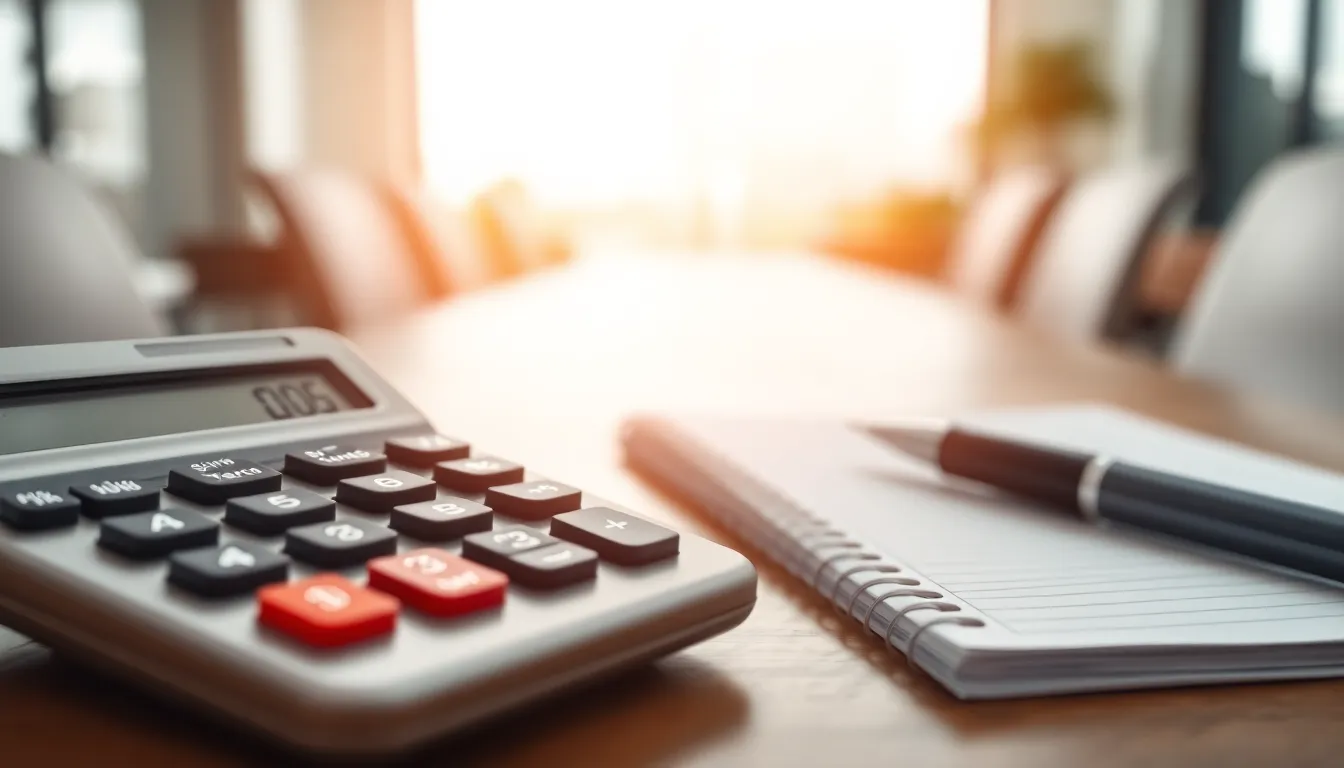Understanding percentages can feel like deciphering a secret code, but it doesn’t have to be that complicated. Take 6 percent, for example. It might seem like just another number, but converting it to a decimal can unlock a world of mathematical possibilities. Whether you’re calculating discounts, interest rates, or just trying to impress your friends with your math skills, knowing how to make this conversion is essential.
Table of Contents
ToggleUnderstanding Percentages
Understanding percentages allows individuals to grasp numerical relationships in everyday contexts. Converting percentages into decimals simplifies calculations involving finance, statistics, and more.
What Is a Percentage?
A percentage represents a portion of 100. It illustrates how one quantity relates to another based on a total of 100 parts. For example, 6 percent signifies 6 parts out of 100. In practical terms, if a shirt costs $50, a 6 percent discount would save $3. This concept assists in making comparisons and analyzing data effectively.
The Relationship Between Percentages and Decimals
Percentages directly relate to decimals, as both represent fractional numbers. To convert a percentage to a decimal, the percentage divides by 100. Thus, 6 percent transforms into 0.06 when one divides 6 by 100. Using decimals often streamlines calculations, especially in financial contexts like loans or investments. This understanding helps clarify how different representations of the same value interact in various mathematical situations.
Converting 6 Percent to a Decimal

Converting 6 percent to a decimal simplifies financial calculations. This process illustrates how easily one can derive meaningful insights from percentages.
The Conversion Formula
To convert a percentage to a decimal, divide by 100. For example, 6 percent translates to 6 ÷ 100, resulting in 0.06. This formula highlights the direct relationship between percentages and decimals. Understanding this connection enhances accuracy in calculations.
Step-by-Step Conversion Process
Start with the percentage value of 6. Divide 6 by 100, yielding 0.06. This step confirms the conversion process’s effectiveness. Next, remember that moving the decimal point two places to the left achieves the same result. Confirming the outcome, 6 percent equals 0.06 as a decimal. Utilizing this method consistently benefits various calculations, especially in finance.
Practical Applications of 6 Percent as a Decimal
Understanding 6 percent as a decimal plays a crucial role in various mathematical and financial scenarios. Familiarity with this conversion enhances practical decision-making.
Everyday Uses
Everyday transactions often involve percentages. Shoppers frequently encounter situations where a 6 percent discount applies to purchases. For instance, when buying a $50 shirt, the discount saves $3, illustrating how practical this percentage is in daily life. Consumers utilize decimal conversions when calculating tips, where 15 to 20 percent typically guides gratuity decisions. Simplifying 6 percent to 0.06 supports quicker calculations, ensuring smoother financial interactions at restaurants or other service providers. Using the decimal form renders it easier to grasp how much to subtract from the total price during sales and promotions.
Importance in Financial Calculations
Financial scenarios frequently demand precise calculations. Loans, for example, often include interest rates expressed as percentages. A 6 percent interest rate translates to 0.06 in decimal form, making it easier to compute monthly payments or to determine total repayment amounts. Investors assess potential returns using percentages, with 6 percent representing earnings on investments. Accurate conversion simplifies these calculations. When budgeting, individuals calculate monthly expenses based on percentage allocations, benefiting from the clarity that decimals provide. In summary, understanding 6 percent as a decimal streamlines critical financial processes.
Common Mistakes in Conversion
Understanding percentages is crucial, and many encounter common pitfalls. Misinterpreting the concept of percentages often leads to mistakes. Someone may think that 6 percent means simply taking a portion of the total, neglecting the fact that it represents a fraction of 100. A common confusion arises when individuals attempt to apply percentages without realizing the necessity of conversion into decimals for accurate calculations.
Errors in calculation frequently occur during the conversion process. Individuals might forget the simple rule of dividing by 100 when transitioning from percentage to decimal. For instance, confusing the direction of moving the decimal point may result in an incorrect value: 0.6 instead of 0.06. Such misunderstandings can compound in financial settings, where precision is essential. Accurate decimal conversions streamline calculations and ensure reliable results, especially in budgeting, interest assessments, and overall financial management.
Mastering the conversion of 6 percent to a decimal is a valuable skill that enhances financial literacy. It simplifies calculations in everyday transactions and financial scenarios. By understanding that 6 percent equals 0.06, individuals can quickly determine discounts savings and tips with confidence.
This knowledge not only streamlines budgeting but also prevents common errors that can lead to costly mistakes. With practice anyone can become proficient in translating percentages into decimals ensuring accuracy in all financial dealings. Embracing this understanding empowers individuals to make informed decisions and navigate their finances effectively.


